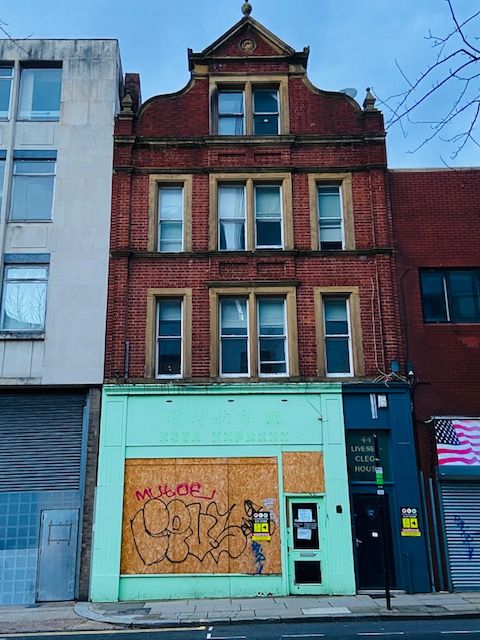
Union Street is not a fashionable road, its role as one of Sheffield’s important thoroughfares, and its ancient connection with Norfolk Street, long diminished.
Post-war redevelopment deprived Union Street of its character, and one of its most important buildings, the shops and offices that made up Cambridge Arcade (with its covered walkway into Pinstone Street) disappeared in the 1970s.
A walk along Union Street today shows that almost all its architecture is from the sixties onwards. All except for one narrow building, a survivor of Sheffield’s Victorian past, sandwiched between unsightly 20th century structures.
However, Livesey-Clegg House, at 44 Union Street, is expected to go the same way as its long-lost neighbours soon.
If plans to create Midcity House, three new tower blocks, up to 25-storeys high, are given the go ahead, then this old building will be demolished.
The last Victorian building to survive on Union Street was built for Thomas Henry Vernon, cork manufacturer, in 1881. His father’s business had originally existed at 2 Union Street at the junction with the old line of Pinstone Street.
Street improvements in 1875 resulted in the creation of Moorhead and comprehensive redevelopment in the area. As part of this, Vernon’s old premises were demolished, with Thomas Henry Vernon succeeding to the business and relocating to Milk Street. When his new premises were built in 1881, he moved to 44 Union Street, and employed about a dozen people.
Vernon died in 1919, the ground floor becoming a small car showroom for Midland Motors, later Moorhead Motors, and the upper floors converted into offices.
The ground floor was taken over by Hardy’s Bakery in the 1970s, and frequently changed hands afterwards, used as a shop and several food takeaways, and is now empty and boarded-up.

While most Sheffield folk were interested in what went on at street level, it is the floors above that provide the real sense of history.
The name above an adjacent door – Livesey-Clegg House – indicates that this was once home to the British Temperance League.

In Victorian times, high levels of alcohol consumption and drunkenness were seen by some as a danger to society’s well-being, leading to poverty, child neglect, immorality, and economic decline. As a result, temperance societies began to be formed in the 1830s to campaign against alcohol.
The British Temperance League, a predominantly northern teetotal and Christian society, was the new name in 1854 for the British Association for the Promotion of Temperance. In 1880 it moved its headquarters from Preston to Union Street in Sheffield, largely due to the influence of the Clegg family.
Successive members of the Clegg family served as chairman of the executive committee: William Johnson Clegg (1826-1895), sometime alderman of Sheffield, and his son Sir (John) Charles Clegg, best known as chairman and president of the Football Association. His brother, Sir William Edwin Clegg, sometime Mayor of Sheffield, was a vice-president.
By the 1890s its finances and prestige were in decline, but the society persevered and by 1938 was looking for new premises.
“Street widening and re-planning will shortly make it necessary for us to vacate the offices in Union Street, of which we have been tenants for more than 50 years,” said Herbert Jones, the secretary. “We have long felt the need of a permanent home for books, pictures, and other treasures of the movement.”

In 1940, the society moved into 44 Union Street and called it Livesey-Clegg House – named after Joseph William Livesey (1794-1884), a temperance campaigner, politician, and social reformer, and Sir John Charles Clegg (1850-1937), chairman and president of Sheffield Wednesday and founder of Sheffield United.
As well as the headquarters of the British Temperance League, its collection of journals, monographs, bound collections of pamphlets and non-textual items, including lantern slides, posters, banners, textiles, and crockery, were housed in Victorian bookcases in a large old-fashioned room that was used as a library.
The BTL merged with the London-based National Temperance League in 1952 to become the British National Temperance League, with the HQ in Sheffield. It remained until 1987 when the historically valuable library was transferred to the University of Central Lancashire in Preston (now known as the Livesey Library after teetotal pioneer Joseph Livesey).
The old offices and library at Livesey-Clegg House were eventually turned into student accommodation.
Alas, the building is not considered to be of architectural importance and will most likely be demolished soon.

© 2021 David Poole. All Rights Reserved.